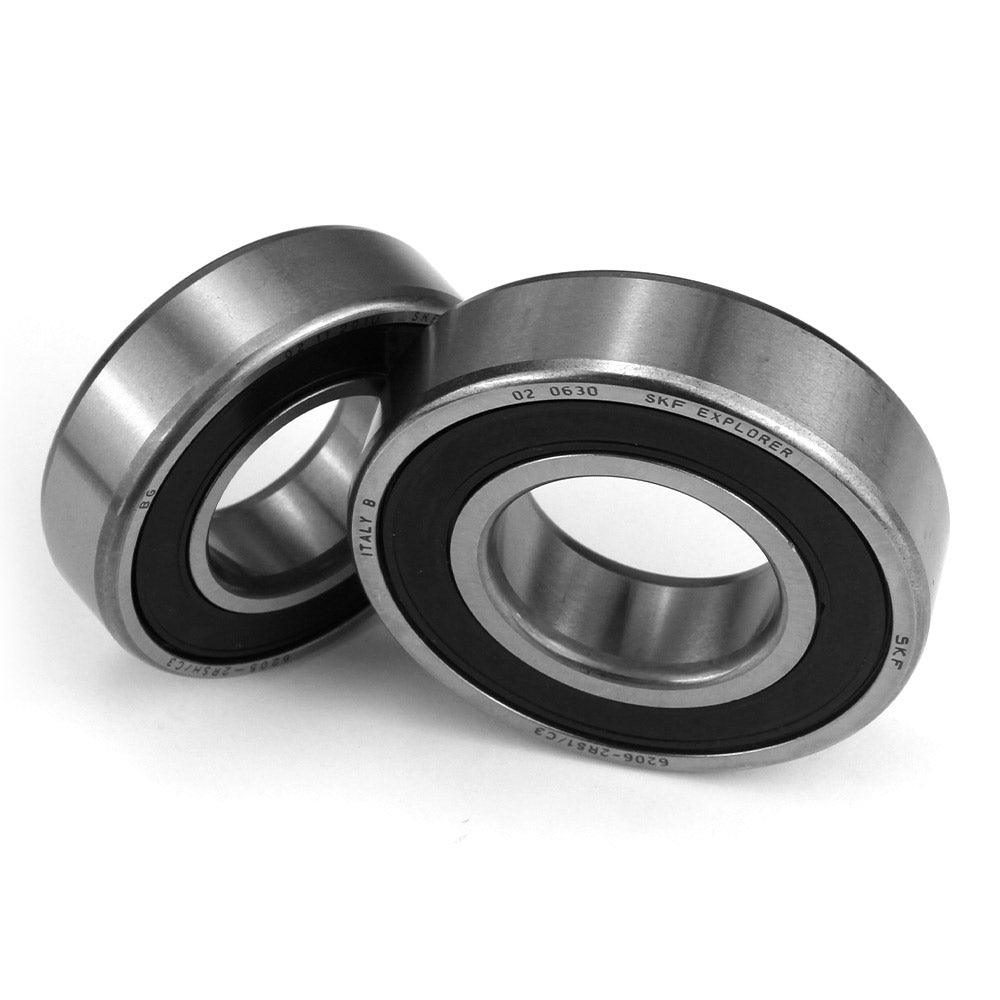ACCESSORIES
Woodworking Accessories: Bearing
In woodworking, bearings are commonly used accessories that offer support and guidance for various cutting tools and machine operations. They play a crucial role in achieving accurate and controlled cuts, especially when working with routers, saws, and other power tools. Here are some woodworking accessories related to bearings:
1. Cutterhead Bearings : Planers feature a rotating cutterhead that houses the cutting knives or blades. The cutterhead is mounted on a shaft and is responsible for removing material from the workpiece. Inside the cutterhead assembly, bearings are used to support the shaft and allow it to rotate smoothly. These bearings help reduce friction and ensure precise and consistent cuts by maintaining the proper alignment of the cutterhead.

2. Router Bearings: Router bearings are designed to guide the cutting bit of a router along the edge of the workpiece. These bearings are typically mounted on the shank of the router bit, providing stability and control while routing edges or creating decorative profiles. The bearing acts as a guide against a template or the edge of the workpiece, ensuring consistent and precise cuts.
3. Flush Trim Bits: Flush trim bits are router bits equipped with a bearing at the tip. They are commonly used for pattern routing and template work. The bearing follows the contours of a template, allowing the bit to trim the workpiece to match the template's shape precisely. Flush trim bits are ideal for achieving clean and smooth edges or duplicating complex shapes accurately.
4. Pattern Bits: Pattern bits are similar to flush trim bits but have a bearing located above the cutting edge. This configuration allows the bearing to ride along the template or pattern while the cutting edge removes the excess material. Pattern bits are useful for shaping curved or irregular surfaces and can produce consistent results when used with templates or jigs.
5. Rabbeting Bits: Rabbeting bits are router bits that include bearings at the tip or on the shank. These bits are designed to cut rabbets, which are recesses or grooves along the edge or face of a workpiece. The bearing controls the depth of the cut, allowing precise and uniform rabbets to be created. Rabbeting bits are frequently used in joinery, edge profiling, and panel construction.
6. Table Saw Miter Gauge Bearings: Some table saw miter gauges feature bearings that provide smoother and more controlled movement when making angled or crosscuts. These bearings help reduce friction and allow the miter gauge to slide effortlessly along the table saw's miter slot, ensuring accurate and precise cuts.
7. Bandsaw Guide Bearings: Bandsaws often incorporate guide bearings to support and stabilize the blade during cutting. These bearings are typically located near the blade's cutting area and help minimize blade deflection, ensure consistent tracking, and improve cutting accuracy. Bandsaw guide bearings come in various designs, such as roller bearings or ball bearings, and are adjustable to accommodate different blade sizes.
8. Lathe Spindle Bearings: In woodturning, lathe spindle bearings are crucial components that support the rotation of the workpiece. These bearings are typically located at the headstock and tailstock ends of the lathe bed. They provide smooth and precise rotation, minimizing vibration and allowing for accurate shaping and turning operations.
Bearings in woodworking accessories contribute to the overall precision, control, and safety of various woodworking operations. They help maintain consistent cuts, reduce friction, and improve the longevity and performance of cutting tools and machines. When using bearings, it's essential to ensure they are properly installed, regularly lubricated, and maintained to optimize their functionality and extend their lifespan.
